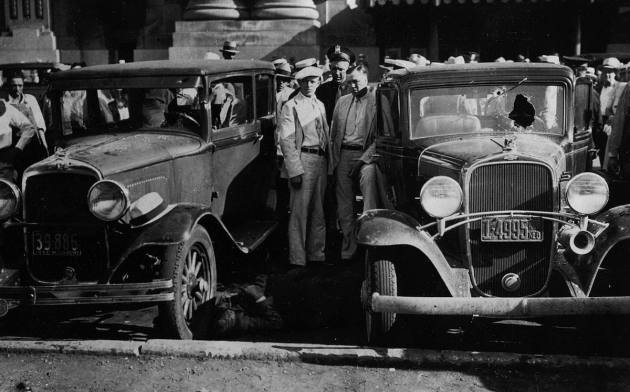There was a time when the FBI strictly investigated and helped transfer federal prisoners across neighboring jurisdictions. Contrary to Hollywood images, the presence of Eliot Ness with submachine gun under one arm, holding his badge up and charging into the fray was not an FBI reality.
First, Eliot Ness was not FBI (Justice). He was Treasury, and the thought of Mr. Ness pursuing murderers in Chicago would have been a tad bit out of his jurisdiction. Murder is a state offense, not one normally counselled by the likes of Treasury.
In the early 20th Century however, the U.S. Treasury represented the police, and in addition to protecting the President and Vice President, their job was to protect the currency. That responsibility came with the passage of the Federal Reserve Act on December 23, 1913. Before that date, National Banks issued U.S. currency.
The FBI depended on local police for their protection when transporting federal criminals from one jurisdiction to another. Frank “Jelly” Nash was just the kind of criminal the FBI usually escorted. Having previously spent time in state penitentiaries for murder and other crimes, he was convicted of a federal crime–assaulting a mail carrier–and later helping in a prison break from Leavenworth.
The FBI scoured the country. Two FBI Agents, Frank Smith and F. Joseph Lackey, along with McAlester, Oklahoma Police Chief Reed, apprehended Nash in Hot Springs, Arkansas on June 16,, 1933. The four of them then traveled to Fort Smith, where they boarded the Missouri Pacific for Kansas City, and eventually Leavenworth.
READ MORE LOCAL HISTORY FROM ROBERT WHITE
On the platform at Union Station the four were met by Special Agent in Charge Vetterli, FBI Agent Caffrey, and Officers Grooms and Hermanson of the Kansas City Police Department. Agent Lackey and Officer Reed carried shotguns, while the other officers carried only handguns.
But Nash had friends that wanted him set free. Richard Galatas, Herbert Farmer, “Doc” Louis Stacci, Frank Mulloy, and Vern Miller devised a plan to free him. The crew, wanting even more assistance had put a call into “Pretty Boy” Floyd and Adam Richetti, who despite car trouble in Bolivar, Mo., may or may not have been part of the criminal element.
The seven officers walked to two parked Chevrolets and were assorting the seating when, according to the FBI, Miller, Floyd, and Richetti opened up with 45 caliber machine guns at ranges of between 15 feet and 30 feet. Only Agents Smith, Lackey, and Vetterli survived the assault. The perpetrators were all later captured or killed.
For those who need evidence, it can be found in the bullet holes at the east entrance. Next time you are at Union Station head over to the building’s east entrance. There’s a plaque, and bullet holes, commemorating the incident.
Before this incident the FBI was not allowed to legally carry firearms and outside of a citizen’s arrest had no arresting authority. On the basis of the massacre, Congress granted them the authority a year later.
So, the pictures and the movies of FBI officials charging around the country, guns drawn in the 1920s and 1930s is a little far-fetched, at least until Kansas City made it a requirement. Before 1934 the FBI could not even arrest someone short of a citizen’s arrest. So, when you see an FBI agent today, assume he or she is armed, and thank Kansas City.
Bob White is a Certified Financial Planner who lives in the Pleasant Hill area. A graduate of Pembroke Hill School and the University of Kansas, he majored in Economics and minored in history. In addition to local, Kansas and Missouri history, he has an interest in its unique aspects–the events missing from the history books and timelines that paint a more complete picture.










